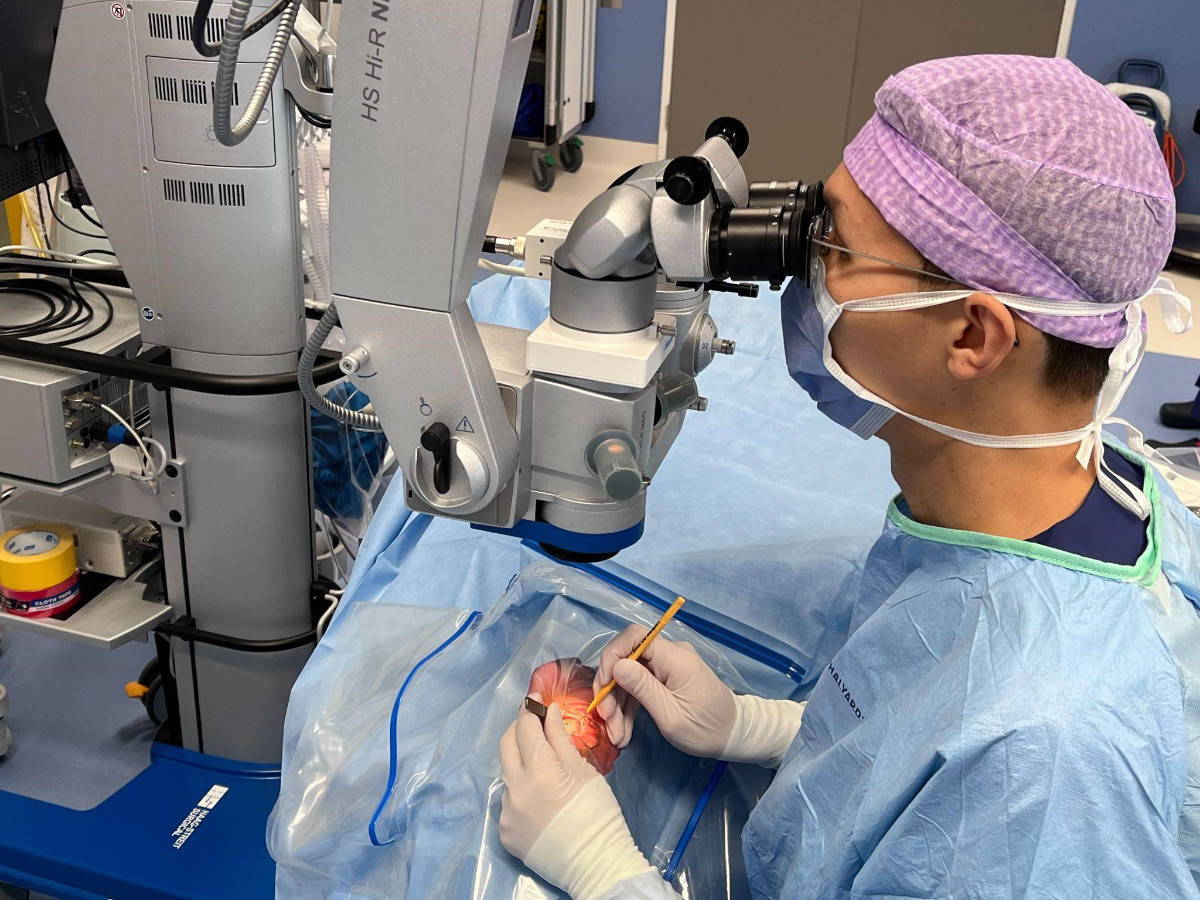
Back in the 2000s when I was an ophthalmology registrar training in the UK, the treatment options for glaucoma were reasonably straightforward.
The first line treatment was with topical eye drops, commonly prostaglandin analogues. If eye drops did not control the intraocular pressure (IOP) sufficiently, the only option was to proceed with filtration surgery, either with trabeculectomy or glaucoma drainage device implantation. If there was an angle closure component to the glaucoma, additional laser iridotomy and/or iridoplasty would be performed.
While eye drops and filtration surgery are effective at reducing IOP, both have multiple disadvantages.
Eye drops are associated with ocular and systemic side effects, preservative-related ocular surface disease, and most importantly, compliance problems. If the patients could not or would not instil their drops as instructed, then there is no other option but to proceed with filtration surgery.
Filtration surgery has a recovery time of a few weeks to months, with vision blurriness and quite a burdensome post-operative management for the first few weeks. There is also the risk of sight-threatening complications, such as infection and prolonged low IOP. The decision to recommend glaucoma filtration surgery is therefore not one to be taken lightly.
Fast forward to the 2020s, and suddenly the glaucoma treatment landscape seems vastly different.This is mainly due to two game changers: selective laser trabeculoplasty (SLT) and minimally-invasive glaucoma surgery (MIGS).
SLT is now edging towards becoming first-line therapy for open angle glaucoma. This is because SLT is just as effective as eye drops in reducing IOP, but at the same time eliminating virtually all the problems associated with eye drops, including compliance issues. SLT is safe, easy to perform in clinic, causes no/minimal pain or inflammation, does not damage the trabecular meshwork, and can be repeated multiple times. SLT has a success rate of around 80%, and requires repeat treatments (on average once every 12 to 36 months) to maintain its IOP-lowering effect.
MIGS is rapidly becoming popular as the initial surgical option for mild-to-moderate glaucoma. By definition, MIGS procedures are quicker to perform, spares the conjunctiva for future filtration surgery, requires minimal post-operative management, and has significantly less risk of sight-threatening complications compared to filtration surgery. In Australia, MIGS procedures involve endoscopic laser or the intraocular implantation of a stent, either as a standalone procedure or at the same time as cataract surgery.
“I look forward to discussing the suitability of laser treatment and minimally invasive glaucoma surgery as part of proactive glaucoma care for your eyes.”
Dr Brian Ang Melbourne glaucoma surgeon &
proactive glaucoma care advocate
As a comprehensive glaucoma specialist in Melbourne, I often offer these options to suitable patients, with improvement in IOP control and quality of life in the great majority of cases.
The following two patients illustrate the benefits of SLT and MIGS perfectly.
The first is a Mandarin-speaking patient in her 30s who had become frustrated with the side effects of prostaglandin analogue drops following her diagnosis of normal tension glaucoma. Following SLT, her IOP has been maintained in the low teens and more importantly, without having to suffer any medication-related side effects.
The second is an Asian glaucoma patient in his 70s who was intolerant to virtually all eye drops, and despite having two SLT treatments, his IOP remained suboptimal in the high teens.As he wanted to avoid the risks of filtration surgery, I performed cataract surgery combined with stent implantation, and 6 months on, his IOP remains around 12 mmHg without any eye drops.
In conclusion, SLT and MIGS are options well worth considering, and I look forward to discussing the suitability of these procedures as part of proactive glaucoma care for your eyes.
